
Key Points
- S&P 500 Battles with the 100-Day Moving Average
- Small Cap Momentum Breaks Out, Will Price Follow?
- NASDAQ 100 Tests Resistance on Three Fronts
- Commodities Hold the Line
- Volatility Continues Trending Down — Will it Last?
Mid-Week Market Update – United States
After a strong rally out of the 3,900 – 4,000 zone above the 50-day moving average, the S&P 500 has stalled at the declining 100-day moving average from below. Note that the 100-day moving average has also provided resistance in late April of this year. RSI has moved up to test the March highs at the 65 zone, a level that stalled previous rally attempts in Q1. Bulls want to see the 100-day moving average and the 65 level in RSI taken out to the upside to having confidence that the recent upside move could have staying power.
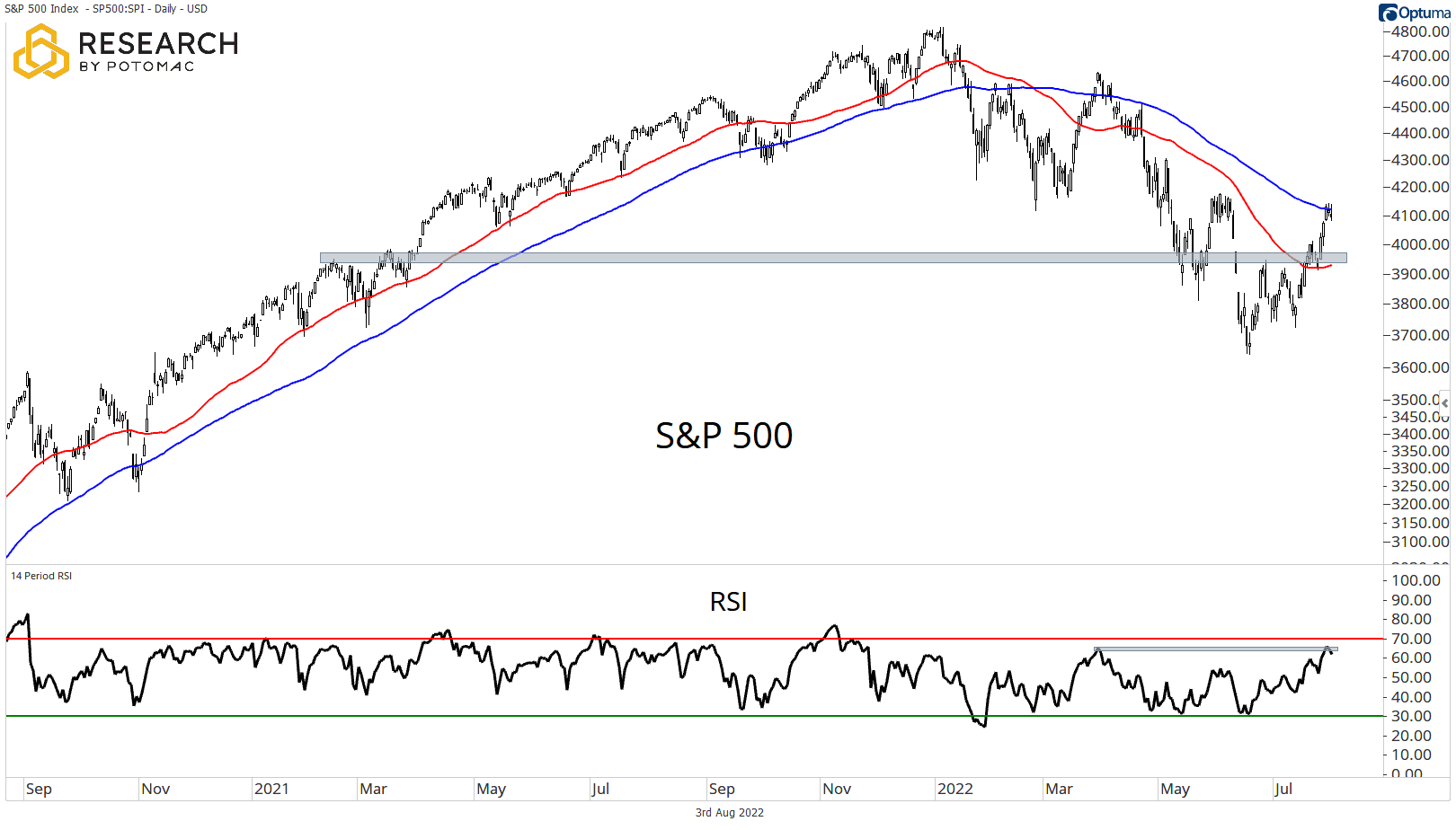
The S&P 600 has recaptured its declining 100-day moving average to the upside for the first time since Q1 of this year and is testing long-term resistance at the 1,250 zone. Note that this indicator has provided multiple points of resistance all year long. RSI has broken out of the 60 zone to the upside, a level that’s defined the downtrend since the index began to roll over to the downside in Q4 of last year. Relative to the S&P 500, the group remains an in-line performer on a series of slightly higher lows in the ratio. Should the index break out of 1,250 and RSI print an overbought reading, the bull case for the Small Cap space becomes strong.
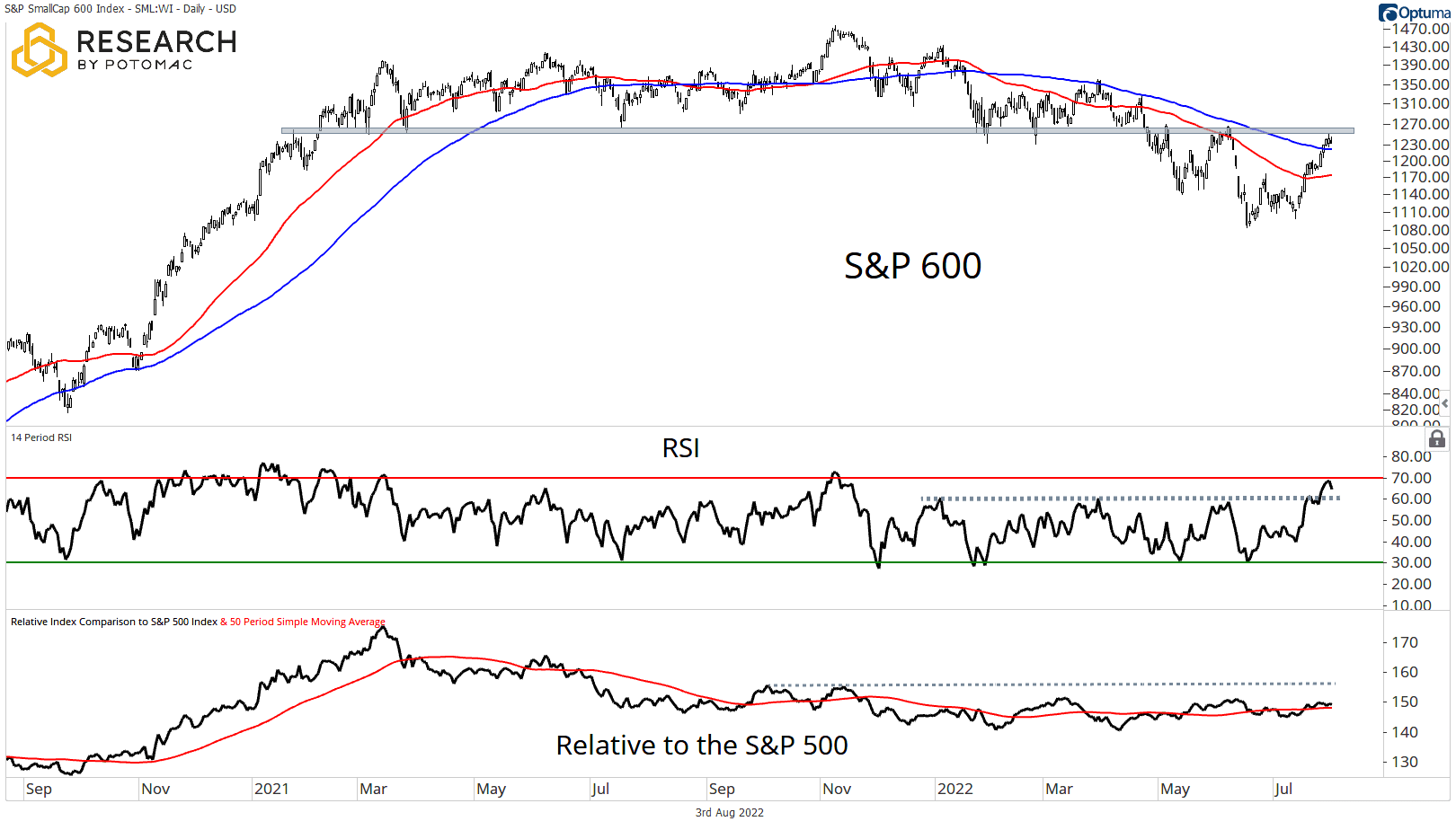
The NASDAQ 100 continues to do battle with the 13,000-resistance zone and the declining 100-day moving average after a strong rally over the past week of trading. Much like the S&P 500, RSI is testing the upper bound of a bearish regime at the 65 zone, a level that’s defined the downtrend along with price resistance at the 100-day moving average in Q1 of this year. Relative to the S&P 500, the group is testing relative resistance at the March lows above the ratio’s rising 50-day moving average, a zone that the bulls want to see broken out to the upside.
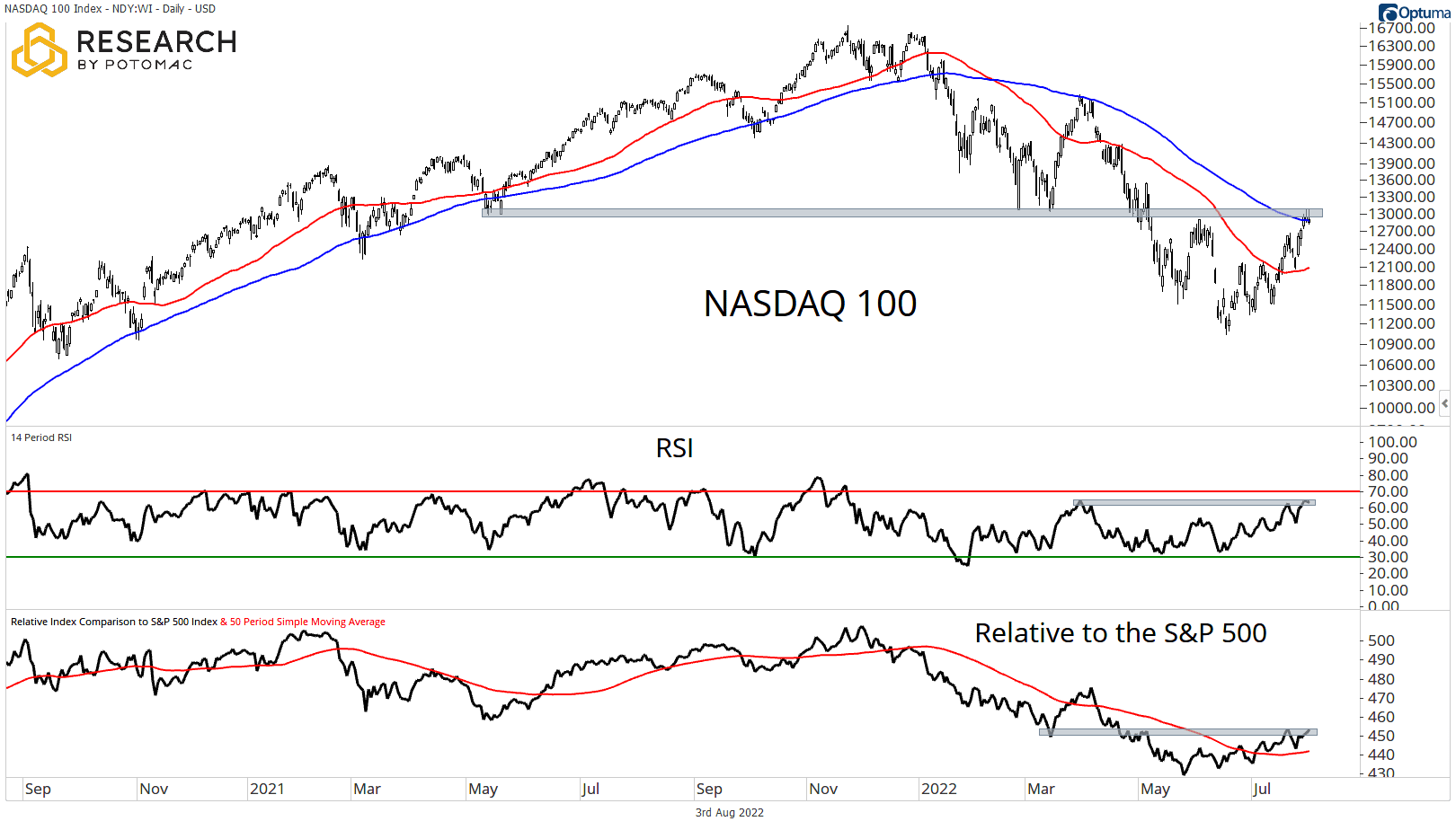
The 10-Year Note experienced a strong reversal to the downside in the August 2nd trading session but remained above both 50 and 100-day moving averages and the 2018 lows. After breaking out of the 60 zone to the upside in RSI, momentum has sliced through this level to the downside after failing to print an overbought reading. These developments should give cause for bond bulls to tighten risk management at these levels.
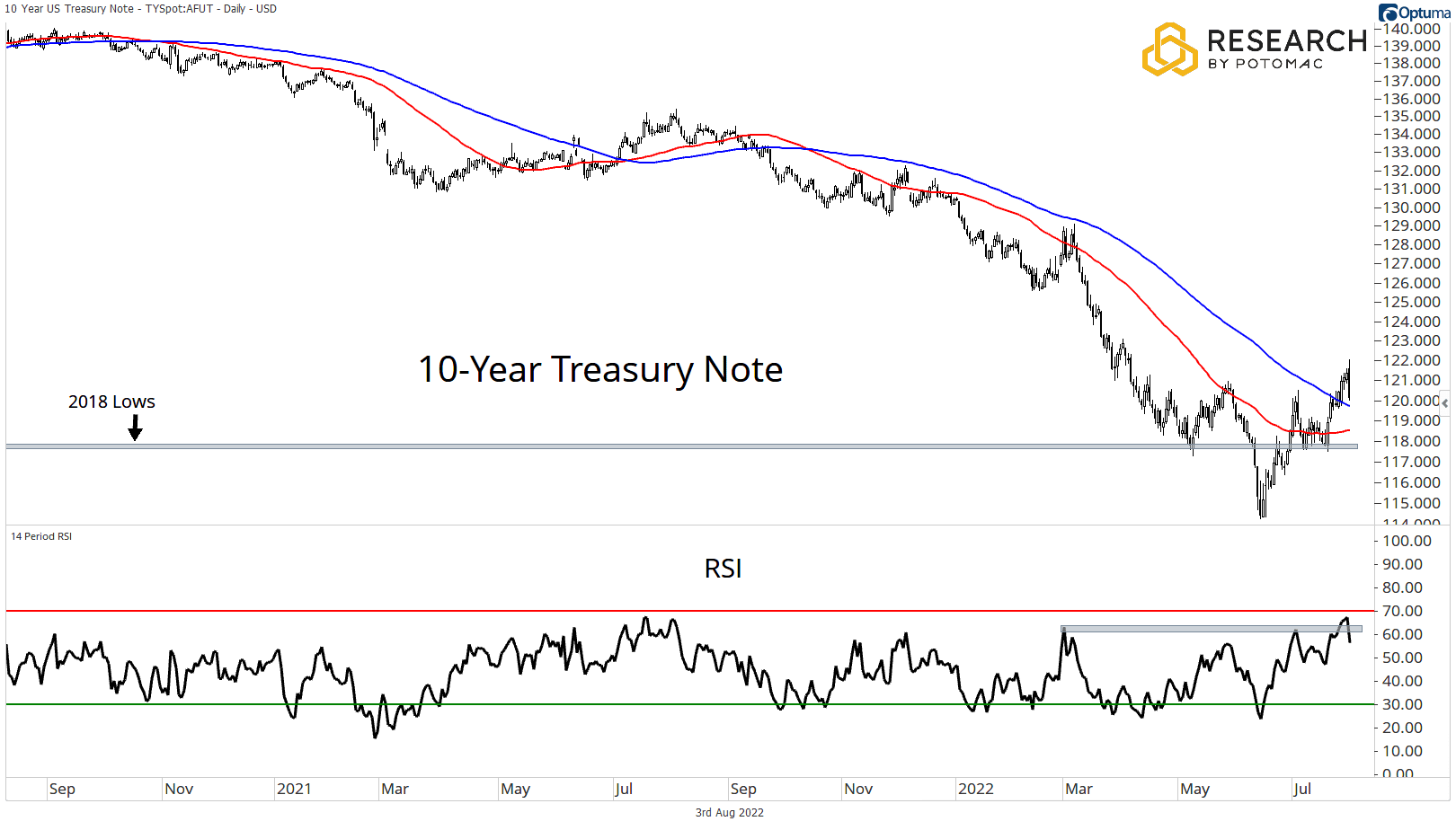
The Bloomberg Commodity Index continues its consolidation under the 50 and 100-day moving averages. RSI is moving down to test the 40 zone, the lower bound of the bullish regime that has defined the uptrend. Relative to the S&P 500, commodities are testing relative support below the ratio’s declining 50-day moving average, a zone that the bulls want to see held to the upside.
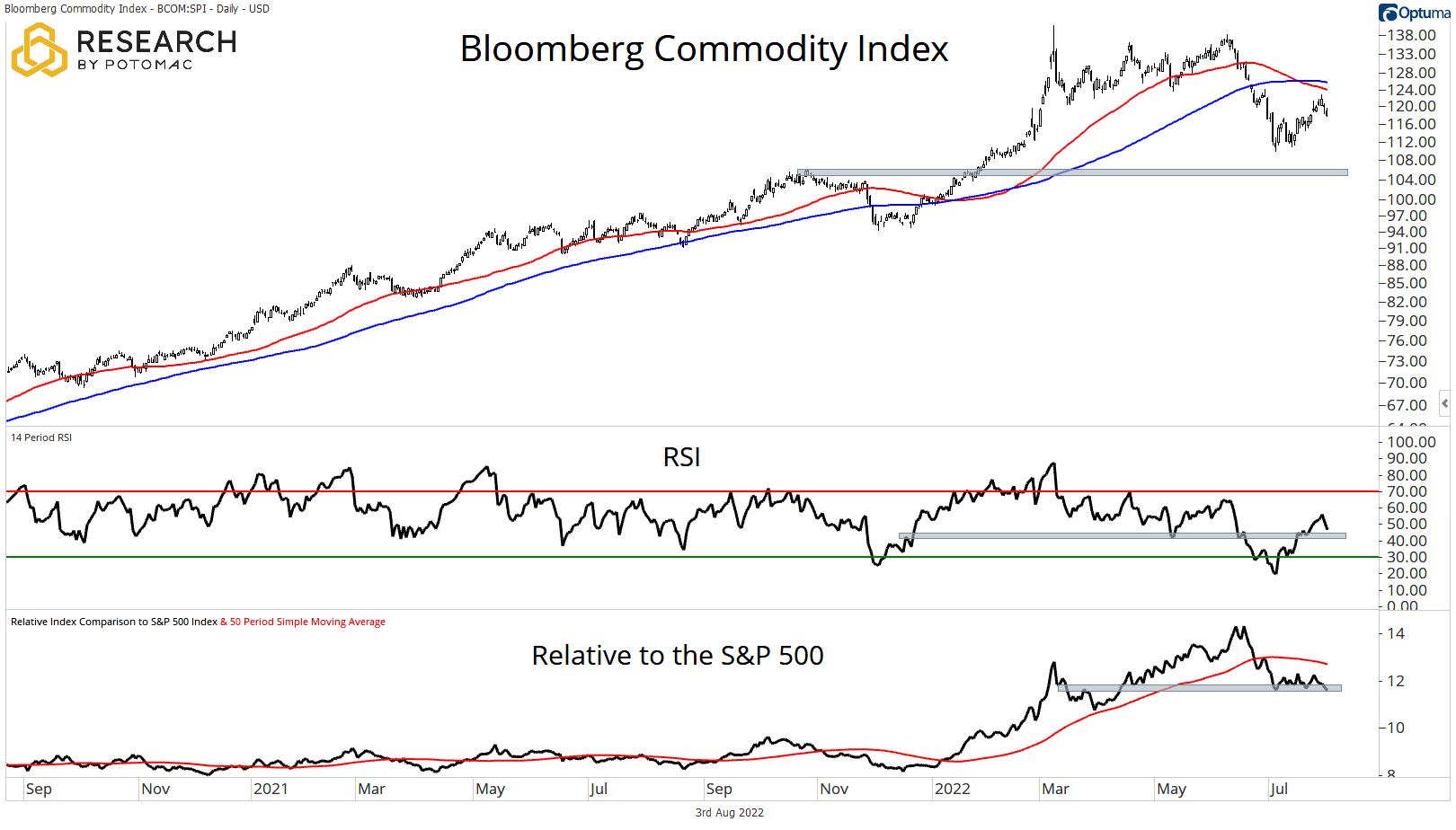
The S&P 500 Volatility Index (VIX) had a sharp upside move in the prior two trading sessions, but the 10-day moving average continues to decline. Bulls would welcome continued lower readings in the index, but this zone could be the pivot point for a move higher should sellers come in strong at the 100-day moving average in the S&P 500.
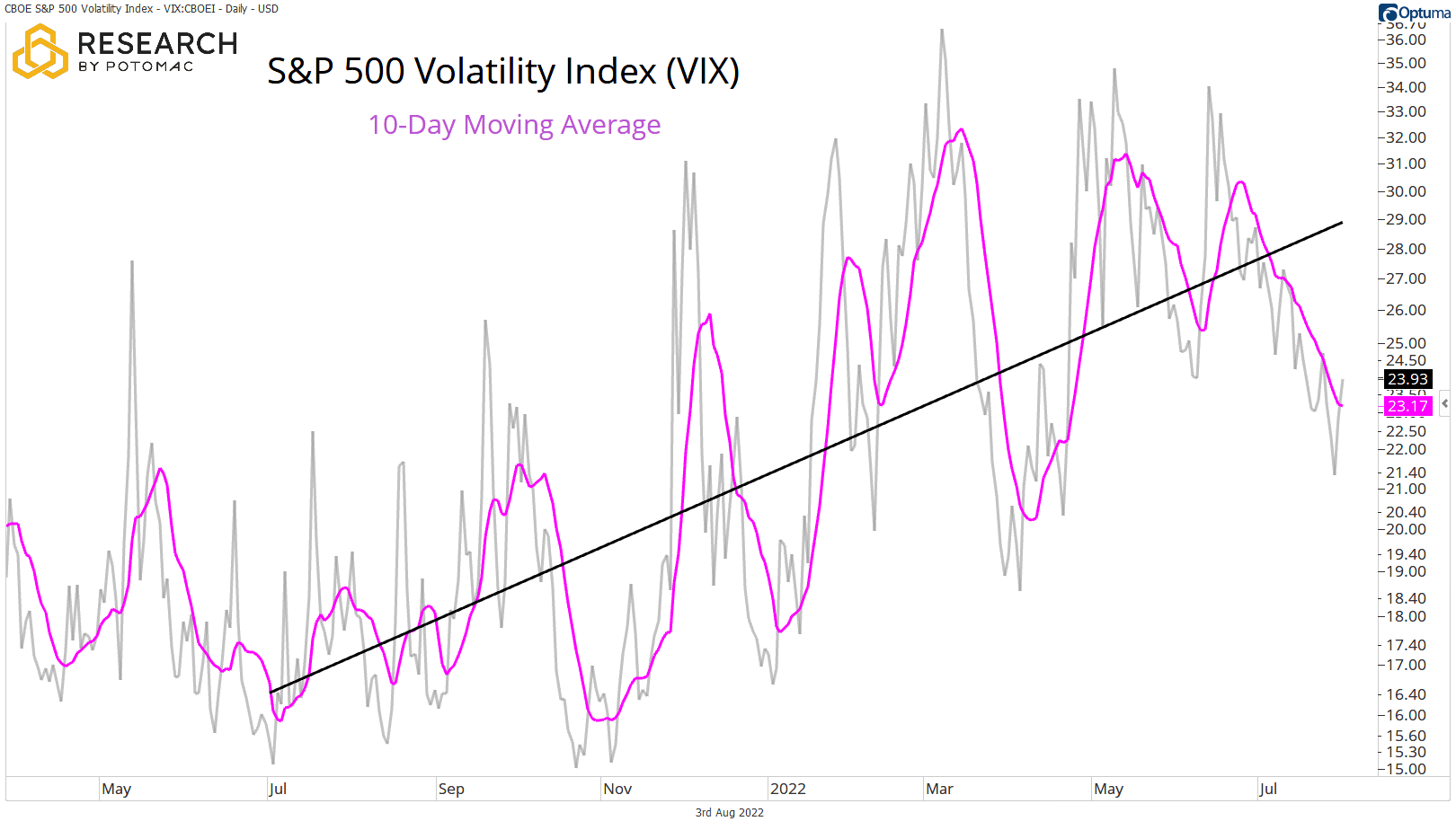
Realized volatility in the S&P 500 via ATRs has continued to decline from the peaks in mid-June. Combined with a steadily lower 10-day moving average in the VIX, these developments are likely important for a sustained upside move in the main equity indexes.
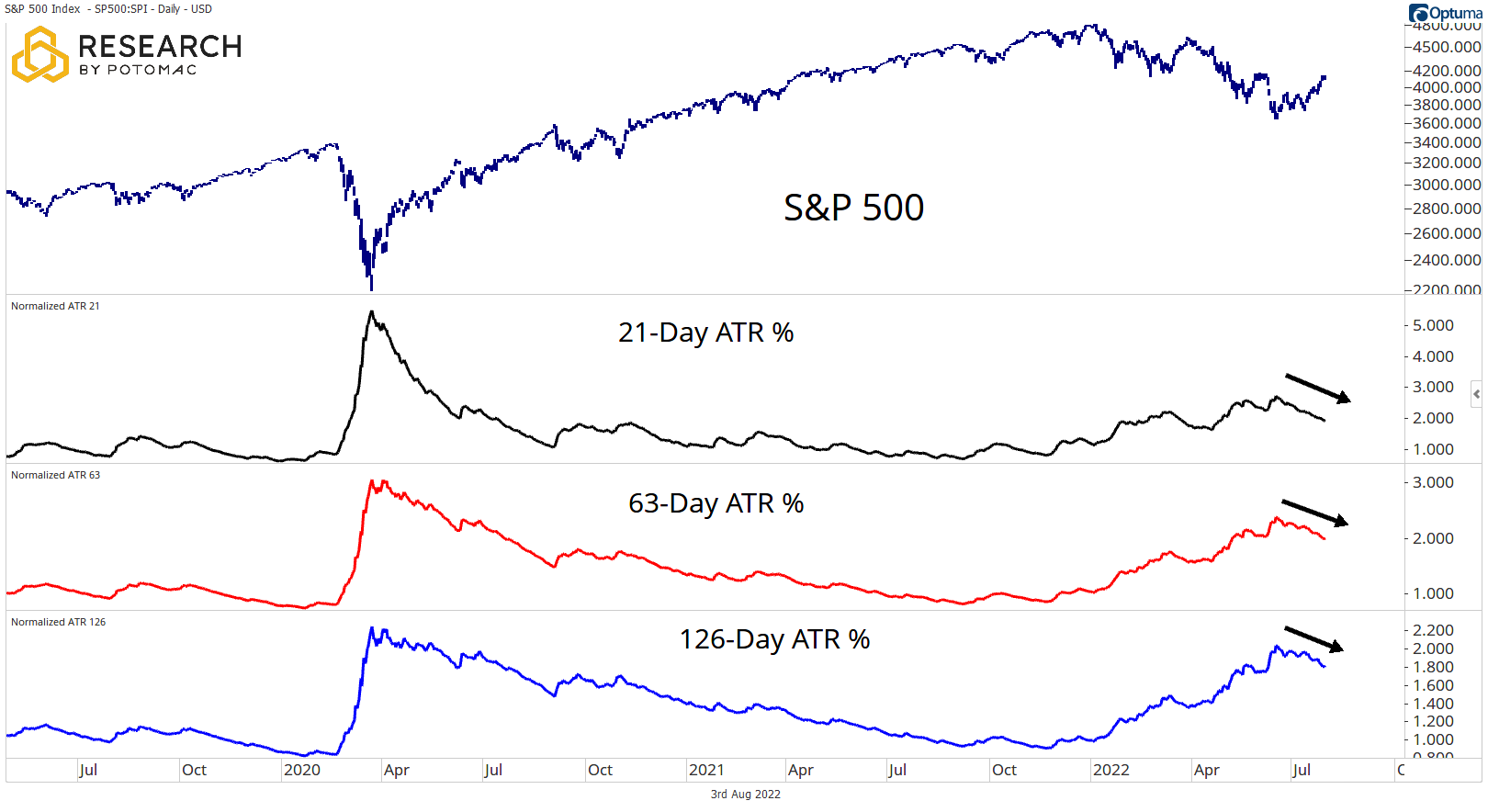
The CNN Fear and Greed Index continues to remain in a “Fear” zone, despite the VIX and realized volatility largely trending down. The index has moved up to 41 from 37 one week ago, signaling slight improvement.
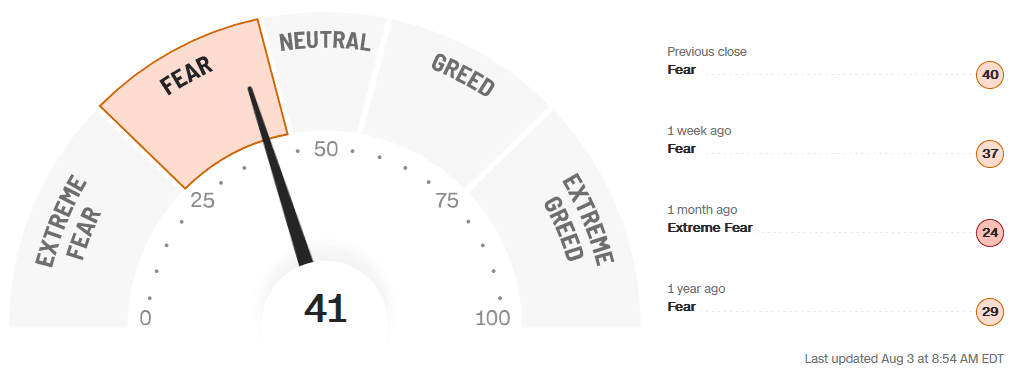
Source: CNN.com
Take-Aways:
The major equity indexes are testing long-term resistance zones as investors take a “wait and see” approach to observe whether the recent upside price action is just a mean reversion move or something more. Bonds bulls have cause for concern as momentum fades from a key breakout zone in the 10-Year Treasury Note, despite strong recent performance. As volatility trends lower, equity bulls want to see a continuation of that trend should breakouts occur to the upside in the equity indexes. We are watching closely.
Disclosure: This information is prepared for general information only and should not be considered as individual investment advice nor as a solicitation to buy or offer to sell any securities. This material does not constitute any representation as to the suitability or appropriateness of any investment advisory program or security. Please visit our FULL DISCLOSURE page.
